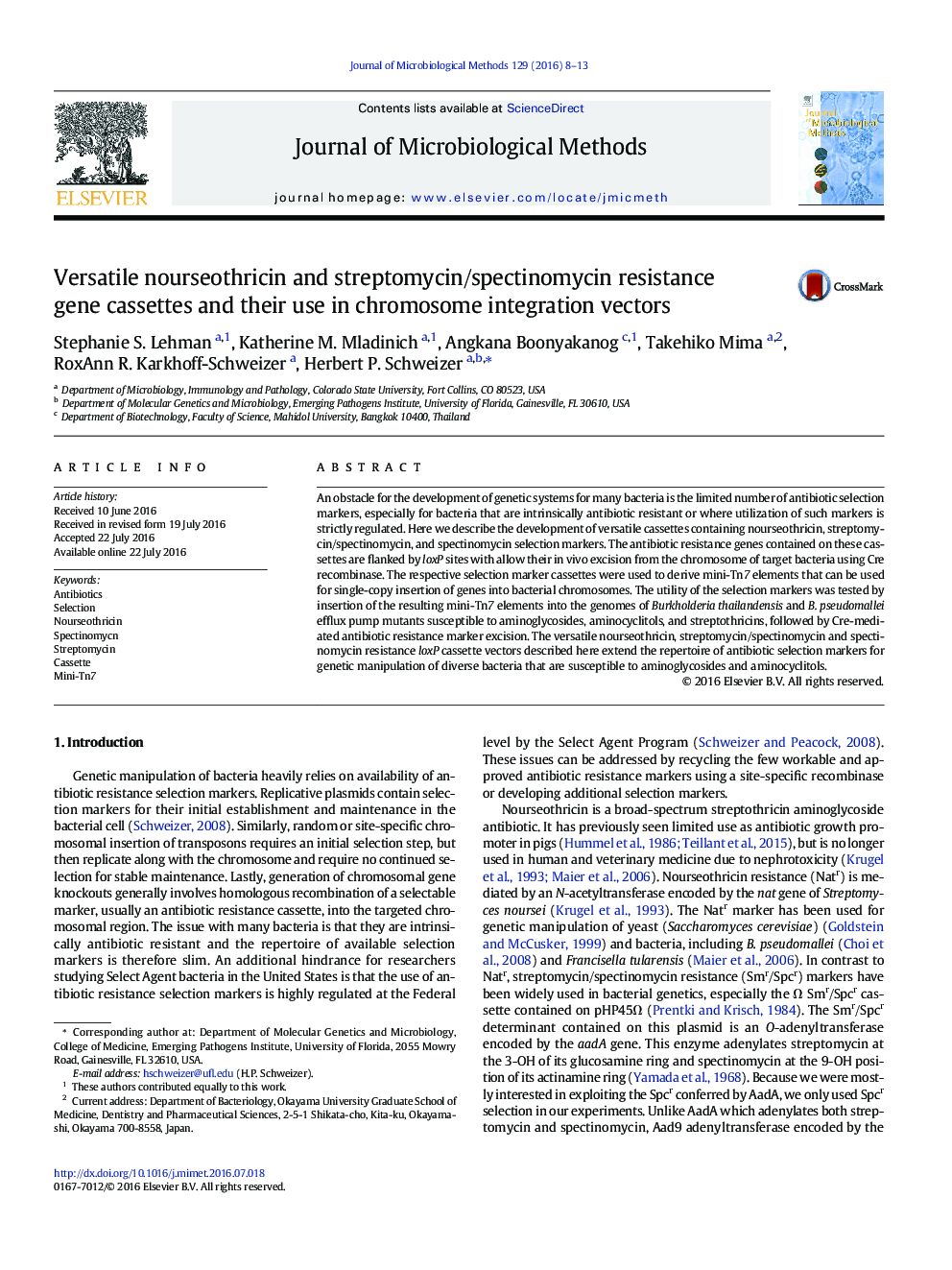| Article ID | Journal | Published Year | Pages | File Type |
|---|---|---|---|---|
| 2089664 | Journal of Microbiological Methods | 2016 | 6 Pages |
•Genetic manipulation of bacteria requires antibiotic selection markers.•Novel nourseothricin, streptomycin, and spectinomycin cassettes were engineered.•Resistance genes can be excised from the chromosome using Cre recombinase.•Mini-Tn7 vectors allow site-specific integration in Gram-negative bacteria.•Selection markers were evaluated in various Burkholderia species.
An obstacle for the development of genetic systems for many bacteria is the limited number of antibiotic selection markers, especially for bacteria that are intrinsically antibiotic resistant or where utilization of such markers is strictly regulated. Here we describe the development of versatile cassettes containing nourseothricin, streptomycin/spectinomycin, and spectinomycin selection markers. The antibiotic resistance genes contained on these cassettes are flanked by loxP sites with allow their in vivo excision from the chromosome of target bacteria using Cre recombinase. The respective selection marker cassettes were used to derive mini-Tn7 elements that can be used for single-copy insertion of genes into bacterial chromosomes. The utility of the selection markers was tested by insertion of the resulting mini-Tn7 elements into the genomes of Burkholderia thailandensis and B. pseudomallei efflux pump mutants susceptible to aminoglycosides, aminocyclitols, and streptothricins, followed by Cre-mediated antibiotic resistance marker excision. The versatile nourseothricin, streptomycin/spectinomycin and spectinomycin resistance loxP cassette vectors described here extend the repertoire of antibiotic selection markers for genetic manipulation of diverse bacteria that are susceptible to aminoglycosides and aminocyclitols.
